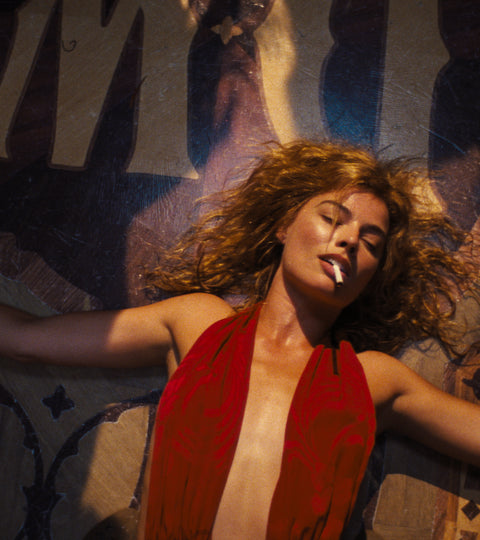 Set in the early 1920s, this Oscar-nominated production depicts the journey from silent to sound films in old Hollywood. Taking visual cues from Los Angeles during the Jazz Age, director Damien Chazelle drew on this aesthetic for his filming locations and set design choices.
Set in the early 1920s, this Oscar-nominated production depicts the journey from silent to sound films in old Hollywood. Taking visual cues from Los Angeles during the Jazz Age, director Damien Chazelle drew on this aesthetic for his filming locations and set design choices.
The production design department was tasked with recreating Los Angeles as a glorified mecca, rising from the dusty desert environment initially portrayed on-screen. “The story is about dreamers and people creating and fabricating their dreams. [The team] had to really set the scene in the desert, [where] there's nothing,” explains production designer Florencia Martin. Characters are “building their mat, their idea of wealth and splendor and persona,” while their dreams are either met, destroyed, or never allowed to come to fruition. Playing off a time when glitz and glamour are of utmost importance, On Air’s capabilities are seen throughout the production and emphasize this golden era of cinema.
One of the most memorable scenes is the opening ballroom bacchanal, where On Air printed flooring and faux marble. This extravagant celebration depicted Don Wallach’s estate, the film’s “studio boss.” A massive floor emblem inlay reading “DW” was designed by Kerry Hyatt and placed in the center of the tiled parquet flooring. Marble panels accent the Spanish Gothic elements and obvious luxe of the home.

Large sections of custom-printed Gothic landscape paintings also printed by On Air were wallpapered into the panels of Wallach’s rich red and gold-accented bedroom walls, complementing the desire for fame and notoriety. Martin describes this vision as “Gothic meets Gilded Age manor that existed like a mirage in the Los Angeles desert hills.”
Reaching beyond wallcovering, On Air printed several frosted and stained glass window films to give authenticity to this time period and the film’s multiple settings. It's details like these that tie in elements from Europe and New York, as Chazelle placed importance on historical accuracy.




